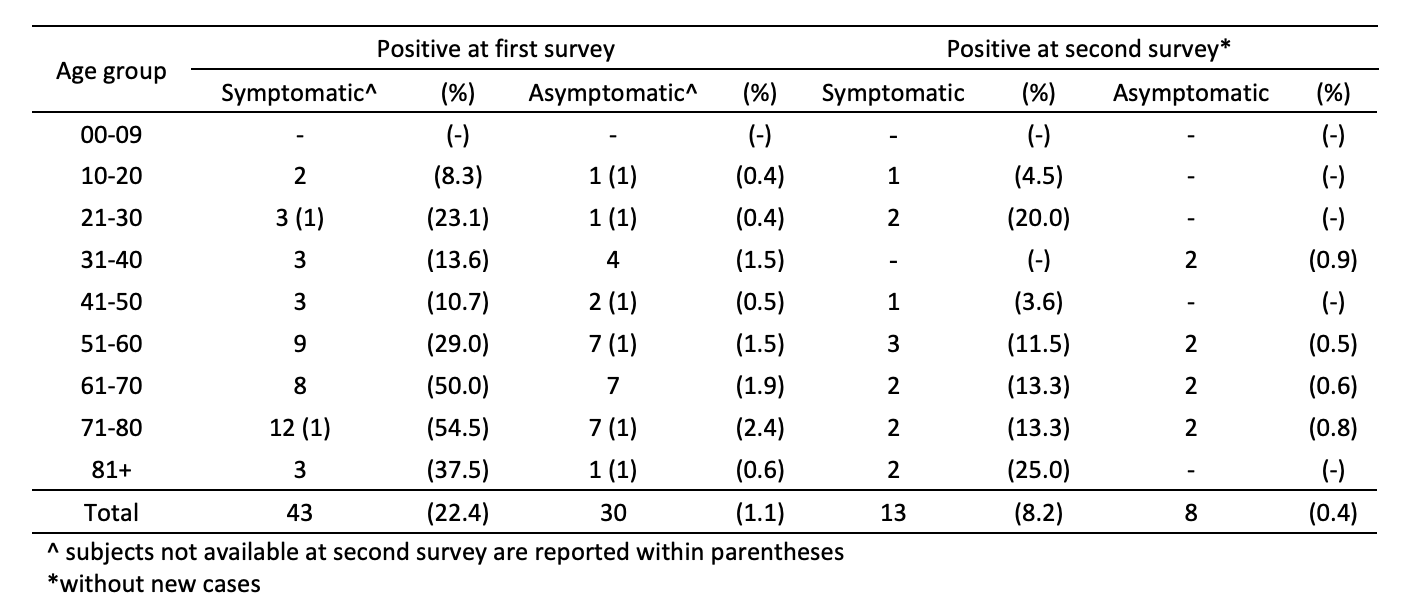We’ve long known that asymptomatic transmission was a thing and recently learned that pre-symptomatic viral loads are very high. A new preprint titled Suppression of COVID-19 outbreak in the municipality of Vo, Italy
A TL;DR below, but the big takeaway is that there was no significant difference in viral load between asymptomatic and symptomatic patients
🔥 Important (pre-print) study from Vo’, a small town in 🇮🇹, where most residents were tested (86% in 1st, 71% in 2nd survey)
— Ilan Schwartz MD PhD (@GermHunterMD) April 18, 2020
Some take-aways:
🥡43% of cases were asymptomatic
🥡 no difference between symptomatic & asymptomatic cases in age nor viral loadhttps://t.co/x5BibLjJap pic.twitter.com/Dq2bkibS5J
Some of their data below

The study focuses on a village called Vo in Italy where researchers tested 85% of the people in the village and then re-tested most of them 14 days later. They used the naso-phyrengeal swab.
They found that 43% of cases were asymptomatic. In this village, 2.6% of people tested were positive in the first test with 1.2% positive in the followup 14 days later; 67% of the people positive in the first test had cleared the virus by the second test. The time to viral clearance averaged 9.3 days.
Interestingly,
The highest rate of recovery (76.5%; 95%CI 50.1-93.2%) was observed in the age group of symptomatic 71-80 year old
Finally they note what may seem obvious: that the lockdown significantly reduced transmission.
One microbiologist did take issue with some of the statistical methods employed
I worrry about the methods used to infer Viral Load. A linear regression is NOT appropriate for Ct. Each 3.32 cycles is 10x more. They need a log regression, or assign a dummy value to their LOD and calculate using relative numbers. This is a paper I have been wanting to write...
— Tom Grys, PhD (@GrysClinMicro) April 19, 2020
